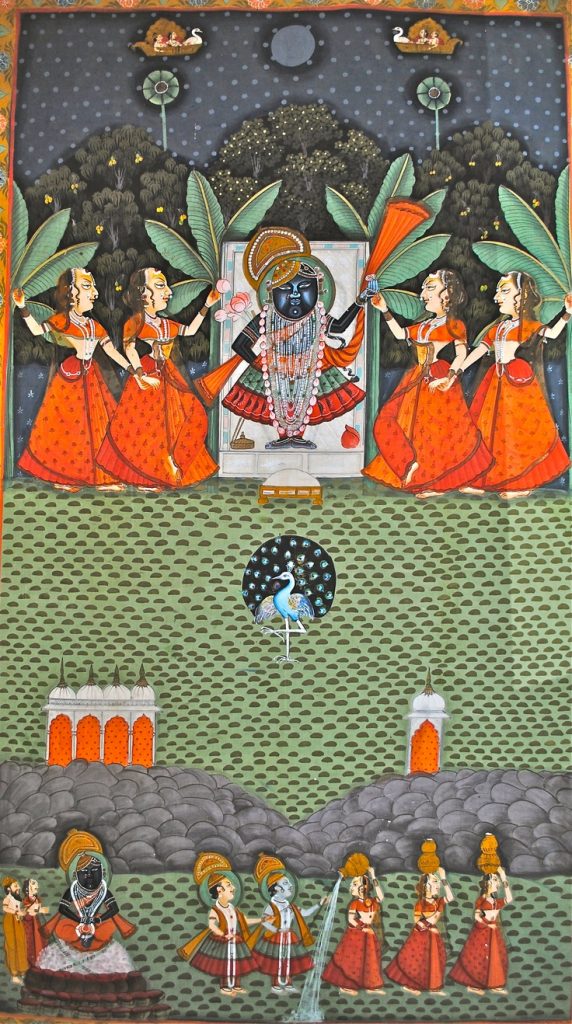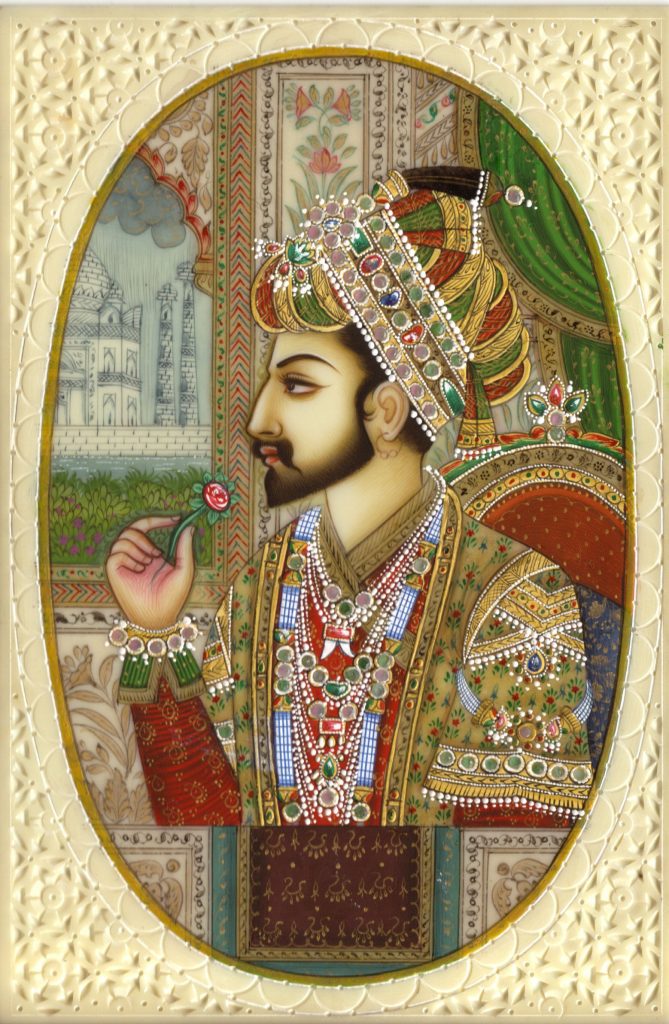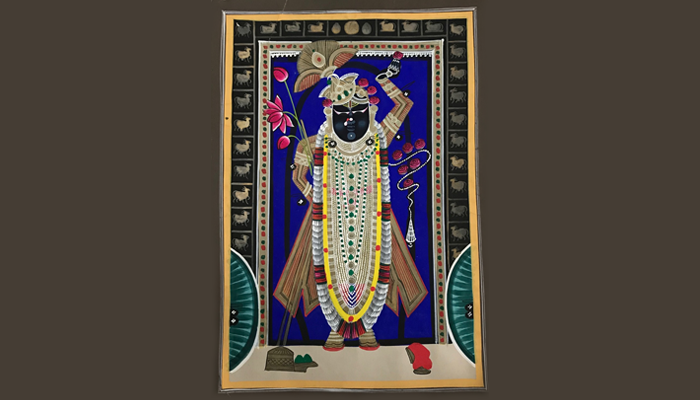This article has been curated by Pranjal Joshi.
Miniature paintings started taking form in India many centuries ago. Initially, these paintings were made on Palm leaves and later on paper. The Eastern school of miniature paintings dates back to the 9th-12th centuries, depicting the Mahayana Buddhist deities. Simple compositions and subdued tones characterize the art of miniature paintings. The famous Brahadeshwar temple of South India has got depictions done in form of paintings done during the 11th century Chola era.

Lord Krishna, the gopis, and the Rasa dance. (Hand-painted on cotton).
A distinct art of Persian Miniature painting was brought to India by the 2nd Mughal emperor Humayun in the 16th century. He brought artists from Persia, who were specialists in the art of miniature painting. Safavid painters Abd as-samad and Mir Sayyid Ali joined his court. Humayun’s successor, Akbar, patronized this art by providing an atelier for these artists. These artists promoted their art and also trained Indian artists, who produced paintings in a distinctive style, which was inspired from the lives of the Mughals.

Mughal Empire Shah Jahan depicted in a handmade Mughal Miniature Painting.
Abkar got the great scripture Ramayan translated. Experiments on rich color schemes and varied expressions happened during this period. A major difference between Mughal art and Rajput art is that the Mughal art was centered around the Mughal court and was very standard in its depiction. On the contrary, the Rajput styles differed as per the areas they belonged to.
Another noteworthy style of miniature painting is the ‘Bani Thani’, which was painted by Nihal Chand from the Marwar school of Kishangarh. This style of painting essentially depicts Shri Radha and Krishna as divine lovers, and beautifully portrays their divine love.
Major themes of Bani Thani paintings include portraits, Nauka Vihar (lovers travelling in a boat), Krishna Lila, Bhagavat-Purana and festivals like Holi, Diwali, Durga puja, and Dussehra.

Rajasthani camel in Indian Miniature Painting.
The Miniature paintings are made very carefully. Strong lines and bold colors are set in harmonious patterns. The artists use paper, leather, marble, cloth, ivory panels, wooden tablets and walls to make their paintings. Indian artists use multiple perspectives unlike their European counterparts to make these paintings. The colors used in making these paintings are made using minerals and vegetables, precious stones, as well as pure silver and gold.
Artists make miniature paintings on silk, ivory, cotton, and paper. However, as time elapsed, the natural colors got replaced by poster colors. The schools of miniature paintings have now become commercialized and the artists usually replicate the work which was done by painters of bygone era.
